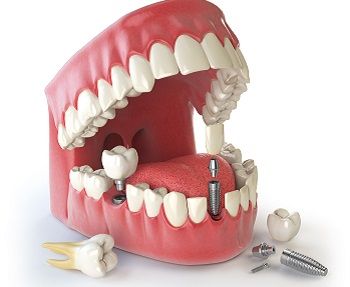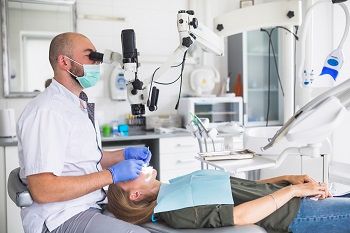The Advancements in Dental Implant Technology: What You Need to Know
Dental Implants Solutions
Are you considering dental implant treatment for your missing teeth? It's important to stay informed about the latest advancements in dental implant technology. From materials to techniques, there have been significant improvements in recent years that can make the process more efficient and effective. In this blog, we'll explore the latest advancements in dental implant technology and what you need to know before deciding.
What are dental implants?
Dental implants are advanced dental prosthetics that replace missing teeth or support other dental restorations. They are designed to replicate the appearance and function of natural teeth, offering a durable and long-lasting solution for individuals with missing teeth and other dental issues.
Dental implants have three main components:
Implant Fixture: This small, screw-like titanium post is surgically placed into the jawbone. Titanium is used because it has the unique property of osseointegration, which means it can fuse with the surrounding bone tissue. This creates a strong and stable foundation.
Abutment: The abutment is a connector attached to the top of the implant fixture once the osseointegration process is complete. It protrudes above the gum line and serves as a bond between the implant and the prosthetic tooth.
Prosthetic Tooth: The visible part of the dental implant resembles a natural tooth. It can be a crown for single-tooth replacement, a bridge for missing teeth, or even used to support dentures for those missing or most of their teeth.

The process of getting dental implants includes the following steps:
- Consultation and Planning: Your dentist or oral surgeon will review your oral health and medical history and determine your suitability for dental implants. A comprehensive treatment plan will be developed based on your specific needs.
- Implant Placement: The implant fixture is placed into the jawbone during this surgical procedure. The area can heal in a few months, during which the implant fuses with the bone through osseointegration.
- Abutment Placement: Once the implant has integrated with the bone, a minor surgical procedure is performed to attach the abutment to the implant fixture.
- Prosthetic Attachment: After a short healing period, a custom-made prosthetic tooth or restoration (such as a crown, bridge, or denture) is securely attached to the abutment. This restoration is carefully designed to match your natural teeth' color, size, and shape, providing a seamless blend with your existing smile.
Understanding the limitations of Dental Implants
While dental implants are effective and widely used solutions for replacing missing teeth, they have certain limitations you should be aware of. Here are some of the limitations of dental implants:
- Bone Density and Quantity: Successful dental implant placement relies on having sufficient bone density and volume in the jaw to support the implant. If a patient has significant bone loss, bone grafting may be needed to create a suitable foundation for the implant.
- Surgical Procedure: Dental implant placement involves a surgical procedure that carries inherent risks like infection, nerve damage, or sinus perforation (for implants in the upper jaw). While these complications are rare, they can occur.
- Healing Time: The process of osseointegration, where the implant fuses with the bone, takes several months. Patients may need to avoid certain foods and activities during this time for proper healing.
- Cost: Dental implant procedures like traditional dentures or bridges can be more costly than other tooth replacement options. The cost includes implant surgery, abutment, and prosthetic teeth.
- Surgical Suitability: Only some people are suitable candidates for dental implants. Factors such as overall health, certain medical conditions (e.g., uncontrolled diabetes), and lifestyle habits (e.g., smoking) can impact the procedure's success.
- Maintenance and Oral Hygiene: While dental implants do not get cavities, they are not immune to oral health issues. Proper oral hygiene practices are essential to prevent complications such as gum disease around the implant site.
- Longevity: While dental implants are known for their durability, their lifespan can vary based on factors like oral hygiene, lifestyle choices, and the individual's overall health. While many implants can last for decades, they might eventually require replacement or restoration.

Advancement in Dental Implant treatment
Advancements in dental implant technology have significantly improved implant procedure success rates, comfort, and efficiency. These innovations continue to enhance the overall patient experience and provide more options for individuals seeking tooth replacement. Here are some notable advancements in dental implants:
- Digital Imaging and Guided Surgery: Modern imaging techniques like cone beam computed tomography (CBCT) enable precise planning and placement of dental implants. Computer-guided surgery utilizes 3D imaging to create a detailed map of the jaw, ensuring optimal implant positioning and reducing surgical complications.
- Immediate Loading: Traditionally, there was a waiting period between implant placement and prosthetic attachment. With implant design and materials advancements, some patients can receive a temporary crown or restoration on the same day as the implant placement, minimizing downtime.
- Mini Dental Implants: These are smaller-sized implants used where traditional implants might not be suitable due to limited bone volume. Mini dental implants often stabilize dentures and offer a less invasive alternative.
- Zirconia Implants: While titanium implants have been the standard, they have gained popularity due to their tooth-like appearance and biocompatibility. Zirconia implants are white and can be a great option for those with thin or translucent gum tissue.
- Nanotechnology: Nanotechnology is being used to modify implant surfaces, enhancing osseointegration. Nanostructured surfaces promote faster and more substantial bone attachment, reducing healing times.
- Smart Implants: Researchers are exploring the integration of sensors and electronic components into dental implants. These "smart" implants could monitor factors like chewing forces, temperature, and pH levels, providing valuable information to both patients and dentists.
- Tissue Regeneration Techniques: Advancements in tissue engineering and regenerative medicine are leading to innovative techniques for enhancing bone and soft tissue regeneration around implant sites. This can significantly benefit patients with compromised bone quality.
- Customized Implant Abutments: Computer-aided design and manufacturing (CAD/CAM) technology allows the creation of custom abutments that fit the patient's unique anatomy perfectly, improving aesthetics and function.
- Laser Technology: Lasers are used in implant dentistry for procedures like uncovering implants, disinfection, and soft tissue management. Laser-assisted treatments can reduce discomfort and promote faster healing.
- Biocompatible Coatings: Researchers are developing biocompatible coatings for implant surfaces that promote tissue integration and discourage bacterial growth, reducing the risk of infections.
- 3D Printing: 3D printing technology has the potential to revolutionize implant manufacturing. It allows for creation of complex implant designs and customized solutions tailored to each patient's needs.
These advancements collectively contribute to safer, more efficient, and patient-friendly dental implant procedures. However, patients and dental professionals must stay informed about these innovations and evaluate their appropriateness for individual cases.
Conclusion
In conclusion, dental implant technology has made remarkable strides in revolutionizing tooth replacement solutions and restoring smiles with unparalleled precision and aesthetics. The journey from traditional restorations to the cutting-edge advancements we see today has been marked by continuous innovation, research, and a commitment to enhancing patient experiences.
Contact your Walnut Creek Dental Implant dentist, Massood Darvishzadeh, DDS at Dental Implant Solutions, to learn more about the Advancements in Dental Implant Technology.
Resource:
Early and Late Dental implant failure.
This media/content or any other on this website does not prescribe, recommend, or prevent any treatment or procedure. Therefore, we highly recommend that you get the advice of a qualified dentist or other medical practitioners regarding your specific dental condition.
Subscribe To Our Newsletter
Get Updates And Learn From The Best
More To Explore



CONTACT US
Massood Darvishzadeh, DDS
2021 Mt Diablo Blvd., Suite 100A
Walnut Creek, CA 94596
(925) 939-2600info@dentalimplantsolutions.net